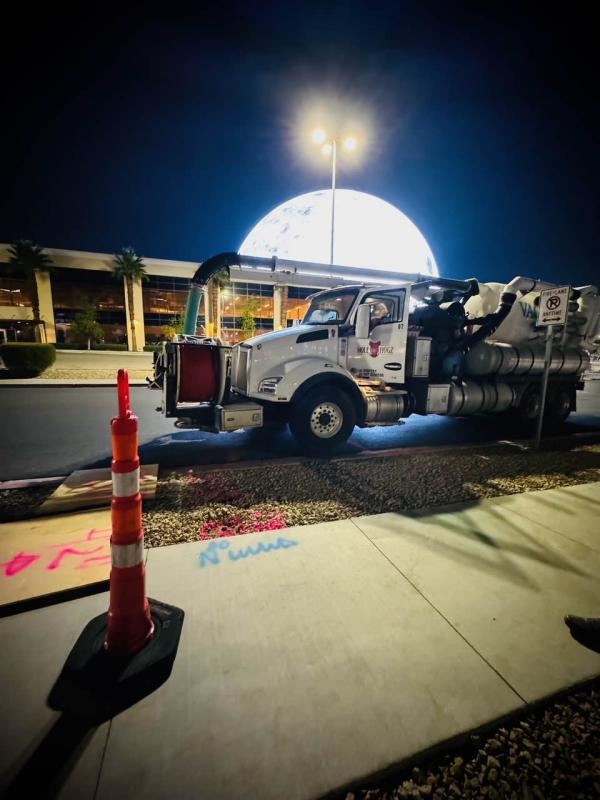Underground Infrastructure Improvements Are Cost Effective With Hydro Excavation
It can be done faster, safer, and more cost effective.
Posted 01:54 April 07, 2025
Last Updated 01:54 April 07, 2025
 Underground infrastructure improvements for transportation, such as subway systems, tunnels, and underground freight networks, hold significant potential to be both cost-effective and environmentally friendly, though their success depends on careful planning, execution, and long-term vision. These projects, while often requiring substantial upfront investment, can yield economic benefits by reducing traffic congestion, lowering transportation costs, and boosting urban productivity. Simultaneously, they offer environmental advantages by cutting greenhouse gas emissions, minimizing surface disruption, and promoting sustainable urban development. As cities grapple with growing populations and climate challenges, underground solutions are increasingly viewed as a smart way to balance economic and ecological goals, provided the right strategies are employed.
Underground infrastructure improvements for transportation, such as subway systems, tunnels, and underground freight networks, hold significant potential to be both cost-effective and environmentally friendly, though their success depends on careful planning, execution, and long-term vision. These projects, while often requiring substantial upfront investment, can yield economic benefits by reducing traffic congestion, lowering transportation costs, and boosting urban productivity. Simultaneously, they offer environmental advantages by cutting greenhouse gas emissions, minimizing surface disruption, and promoting sustainable urban development. As cities grapple with growing populations and climate challenges, underground solutions are increasingly viewed as a smart way to balance economic and ecological goals, provided the right strategies are employed.
The cost-effectiveness of underground transportation infrastructure stems from its ability to address urban inefficiencies over the long term. For instance, subway systems can transport thousands of passengers per hour, far surpassing the capacity of surface roads clogged with cars. This reduces travel times, fuel consumption, and lost productivity due to traffic, which in some cities costs billions annually. A study of New York City’s subway system estimated it saves the regional economy $10 billion yearly by easing congestion. While construction costs are high—tunneling for a subway can run $100 million to $1 billion per mile depending on geology and urban density—these projects often pay off over decades through fares, increased property values near stations, and reduced road maintenance. Innovations like tunnel boring machines (TBMs) and prefabricated components are lowering costs by speeding up construction and reducing labor. Public-private partnerships can further enhance cost-effectiveness by sharing financial burdens, as seen in projects like London’s Crossrail, which balanced government funding with private investment.
Environmentally, underground transportation infrastructure shines by reducing reliance on fossil fuel-powered vehicles. Subways and electric-powered underground freight systems produce far fewer emissions per passenger or ton of goods compared to cars or trucks. For example, a single subway train can remove hundreds of cars from the road, cutting carbon dioxide output significantly—urban rail systems can reduce per-capita transportation emissions by up to 50% in dense cities. Underground projects also preserve surface ecosystems by avoiding deforestation or wetland destruction often associated with highway expansions. Moreover, they enable denser urban development, discouraging sprawl and preserving green spaces. Energy-efficient designs, such as regenerative braking in trains or solar-powered ventilation systems, further enhance their green credentials. Cities like Copenhagen have integrated these features into their metro expansions, achieving near-carbon-neutral operations.
Challenges to cost-effectiveness and environmental benefits do exist and must be managed. High initial costs can strain public budgets, especially if projects face delays or cost overruns, as seen in some U.S. subway extensions. Tunneling in difficult geological conditions or densely built areas can inflate expenses and extend timelines. Environmentally, construction itself is resource-intensive, generating emissions from heavy machinery and concrete production—cement alone accounts for 8% of global CO2 emissions. However, these impacts can be mitigated. Using low-carbon materials, optimizing construction schedules, and prioritizing electric or hydrogen-powered equipment can reduce the carbon footprint. Lifecycle assessments show that the operational phase of underground systems often offsets construction emissions within a decade, especially when ridership is high.
Ultimately, underground transportation improvements can be a win-win for cost and the environment if designed with foresight. Cities that prioritize high-density routes, integrate renewable energy, and leverage modern construction techniques tend to see the best outcomes. By reducing congestion, emissions, and land use conflicts, these projects align with global sustainability goals while delivering economic returns through improved mobility and urban vitality. As technology advances and urban pressures mount, underground infrastructure stands out as a forward-thinking solution, provided stakeholders commit to disciplined execution and green innovation.
If you have an upcoming excavation project you'd like to discuss, contact the professional excavators here at Hole Hogz. We service Las Vegas, Henderson, Boulder City, and most parts of Clark County Nevada.
